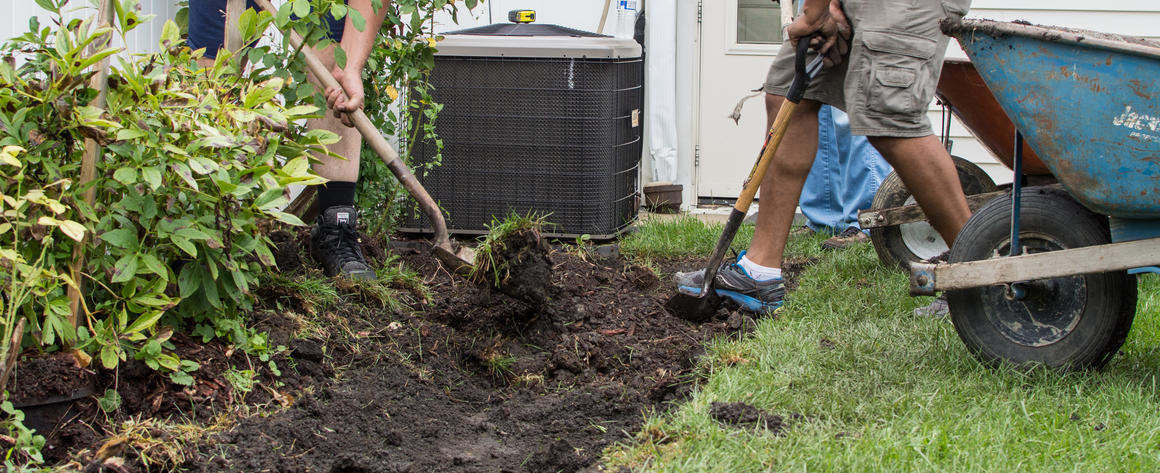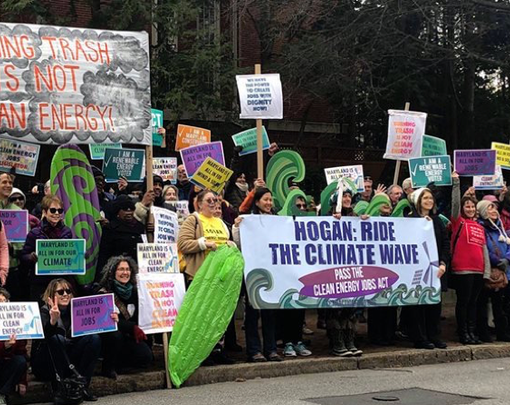Building off the work of Sandy Darity, Darrick Hamilton, Pavlina Tcherneva, and other advocates, US Senators Bernie Sanders, Cory Booker, and Kirsten Gillibrand have all announced or supported plans for a federally-funded job guarantee for any worker who “wants or needs one” in the United States. Under this plan, every American would be entitled to a $15 an hour job, with benefits, through the program. But a key question people are asking is: what would these jobs be? What kind of socially necessary work can be connected to the jobs guarantee, and how would this work as the economy improves and people leave their guaranteed jobs for traditional employment?
One answer is that a temporary influx of federally funded workers could be extremely useful as we prepare for the continuing onset of climate change, now locked in thanks to our collective inability to limit emissions. Climate change puts increasing pressure on our already-crumbling infrastructure in the United States—higher seas, more rain, and bigger storms are coming for our cities and towns, and we are woefully unprepared. In addition to effectively eliminating unemployment, the job guarantee could mobilize an army of workers to build the climate-resilient nation we desperately need—from renewables deployment to infrastructure retrofitting.
Particularly, the workers could be fundamental in deploying green infrastructure projects for water management to dramatically improve public health and climate resiliency. Crucially, because these projects often do not require high skill levels and have low requirements for capitalization, they are a perfect fit to absorb a temporary wave of jobs guarantee workers. This answers a key concern from job guarantee skeptics like Jonathan Chait, who in an article suggesting the job guarantee could be “a huge mistake,” bemoans that unlike in the days of the FDR’s employment infrastructure program, the WPA, “these days, not a lot of construction work can be done with just shovels.” What Chait doesn’t realize is that some of the most effective strategies for dealing with stormwater are literally shovel-ready.
Our cities are concrete jungles barely built to deal with small fluctuations in water, let alone the extreme weather patterns associated with climate change. Just look at Houston during Hurricane Harvey in fall 2017. White-capped waves surged on Houston’s interstate, transformed into a roaring river with over nine trillion gallons of water. All of Houston’s concrete meant that the water had nowhere to go—a common problem in our cities’ urban sprawl. On top of that, much of the stormwater infrastructure in the United States was built in the early 1900s. Over 40 million people are served by combined sewer systems that discharge raw sewage directly into our waterways and contaminate precious drinking water when only a few inches of rain hit the ground.
Green infrastructure harnesses natural systems to divert stormwater before it even reaches the sewer system. It attempts to restore wetlands, plant trees to soak up water, and eliminate impermeable surfaces like concrete. Creating more green spaces can also dramatically lower asthma rates, endemic in low income communities; alleviate the urban heat island effect, key in a warming climate; and produce spaces for communities to congregate.
Desperate Need for Investment
In order to upgrade our stormwater infrastructure, the EPA estimates we would need to invest at least $270 billion over the next 25 years, the majority spent in the next five years to deal with the most urgent projects. In other words, we need rapid and expansive mobilization for green infrastructure. With Darity, Hamilton, and Paul estimating a $543 billion annual cost for a federal job guarantee in their CBPP analysis, this means we could could potentially absorb a fairly significant share—perhaps even as high as five percent—of federal job guarantee jobs dealing just with the stormwater crisis.
The EPA provides cities with some funding through its Clean Water State Revolving Fund, but it is not nearly enough. Capital projects and maintenance for water management can be some of the costliest for municipalities trying to comply with federal standards. The jobs guarantee could go a long way in providing means for municipalities to deal with their stormwater through an activated labor force—particularly those on coastlines and prone to flooding.
Why Green Infrastructure Jobs?
Green infrastructure, with its low threshold for entry, is well positioned for job guarantee projects. Most of the projects can be done by someone with little previous training and yields well to on-the-job learning. The majority of openings would require a high school diploma or less, for example, to maintain green spaces or construct a bioswale.
At the onset, green infrastructure could use a huge influx of workers to overhaul our cities on the short term—for example, pulling up miles of impermeable surfaces and planting native species in thousands of medians. (There’s a historical precedent here—FDR, responding to the Depression and the Dust Bowl, used the WPA and associated efforts like the soil erosion service to plant 220 million trees in seven years). Our 21st century effort to meet our own combined ecological and economic crisis could also create longer-term work for relatively smaller groups of workers through the consistent maintenance, like weeding, required to make sure the projects still deliver benefits long after installation.
While many workers could be employed with little previous training, there is also room for upward momentum. Bernie Sanders’ plan proposes Job Training Centers, which could help to transition workers to higher paid opportunities. Cities are already starting to groom such a new green infrastructure workforce. DC’s Water Utility has started a certification program as part of the District’s Infrastructure Academy that reaches out specifically to underemployed populations, facilitates their apprenticeships, and then requires a certain number of its employees and contractor’s employees be certified under the program. The job guarantee could set up similar programs so that it both provides comfortable jobs with benefits to any American as well as avenues to advancement.
Furthermore, $15 an hour workers with benefits could revolutionize construction and landscaping sector hiring practices. A notoriously underpaid and unstable career, particularly for immigrant workers, providing access to guaranteed jobs could shift the norm towards better paid jobs with benefits. Private firms would have to offer jobs that were at least as good as a guaranteed job.
Building Economic and Climate Resilience
Low income communities are often the first and hardest hit by climate change because of their lack of access to economic stability. The jobs guarantee could create a dual benefit of economic and climate resilience by tackling green infrastructure without much worker training—answering a key objection of job guarantee skeptics. Why not provide good, green jobs while building the infrastructure we need to weather the storms that climate change will send our way?
Images via Center for Neighborhood Technology, CC BY-SA 2.0





